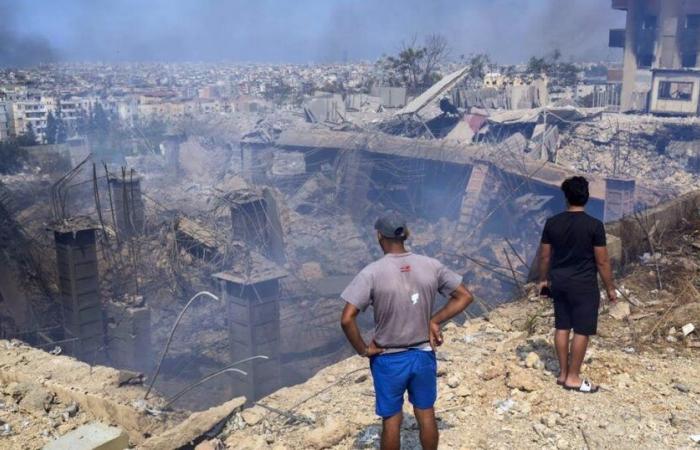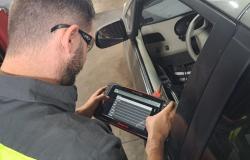With the systematic destruction of villages in southern Lebanon, Israel is, according to experts, trying to create a “no man’s land” with the aim of preventing a return of Hezbollah to the border areas after the fighting stops. Satellite images show massive destruction in around ten border towns.
KEYSTONE
According to Lebanese officials, nearly twenty villages near the border between Lebanon and Israel have been 70% destroyed since the start on September 23 of an intense bombing campaign launched by Israel in Lebanon against the movement. armed pro-Iranian.
It was followed on September 30 by a ground offensive by the Israeli army which dynamited numerous buildings. “Israel seems to be creating “an uninhabitable ‘no man’s land’ all along the border,” Peter Harling, founder of Synaps, a research center based in Beirut, told AFP.
Israeli analysts interviewed by the AFP office in Jerusalem believe that Israel does not aim to conquer southern Lebanon, but to repel the threat from Hezbollah to the north of the country.
«Inhabitable»
“It’s just about having some guarantee that Hezbollah is no longer close to the border and can no longer launch attacks against northern Israel. This is the main goal […] We don’t want Hezbollah there,” expert and former Israeli army soldier Orna Mizrahi of the Institute for National Security Studies (INSS) told AFP.
The Israeli ground offensive was launched after about a year of almost daily exchanges of cross-border fire with Hezbollah, which says it is acting in solidarity with the Palestinian Islamist movement Hamas in Gaza.
Hachem Haïdar, president of the southern council, the Lebanese institution responsible for assessing the damage, told AFP that 18 villages near the border between the two countries, approximately 120 km long, were “70% destroyed “.
Israel’s objective is to “create an uninhabitable buffer zone”, he asserts, estimating that “45,000 residential buildings have been destroyed”. This is particularly the case in Maïss al-Jabal, where more than a thousand buildings were targeted.
“Israeli destruction […] aim to transform the border region into scorched earth,” Abdel Monhem Choucair, mayor of this locality, which had nearly 30,000 people before the war, told AFP. “They destroyed schools, mosques and infrastructure, even cemeteries were not spared,” he adds.
Burned wooded areas
In the small neighboring village of Mheibib, more than 84% of the buildings had been razed as of November 7. Further south, in Yaroun, of the approximately 500 buildings in the center of the village, 380 have disappeared. In Aïta Al-Chaab, another village more than 60% razed, certain entire neighborhoods are also in ruins.
Military expert Hassan Jouni explains that by destroying these villages and burning the wooded areas surrounding them, Israel wants to clear its observation points. Lebanese authorities have accused Israel of burning forested areas and farmland in the south by bombarding them with white phosphorous.
“This buffer zone will become exposed to Israeli control and surveillance,” said Mr. Jouni, former commander of the Lebanese army war school.
This will make it impossible to “repeat the experience of October 7 in Gaza on the Lebanese border,” he adds, referring to the Hamas attack in Israel, which sparked the war in the Gaza Strip on October 7. 2023.
Israel has accused Hezbollah’s elite unit, al-Radwan, which it decapitated in targeted strikes, of wanting to attack Israeli territory.
“Tunnel network”
Israel withdrew from southern Lebanon in 2000 after numerous Hezbollah attacks, following 22 years of occupation. In 2006, a war had already pitted it against the pro-Iranian group, which never respected a UN resolution providing for it to withdraw from the region.
Today, negotiations through the United States to achieve a ceasefire focus on the full implementation of this resolution, according to which only the Lebanese army and the UN peacekeepers must be deployed in this part of the south.
Calev Ben-Dor, a former analyst at the Israeli Foreign Ministry, explains to the AFP office in Jerusalem that “long-range rockets” are one of the “main threats.” “A safe zone wouldn’t do much against rockets,” he said, but it would “prevent Hezbollah from returning to the south and establishing positions there.”
Hassan Jouni, a retired general, believes, however, that the Israeli tactic is doomed to failure, “because people will return and rebuild their homes if there is a political agreement.”
ATS






